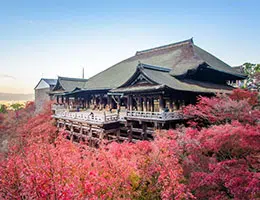 The term haiku , or haiku , has its etymological roots in the Japanese language . The concept refers to a poetic composition that consists of three verses : the first of five syllables , the second of seven syllables , and the last verse of five syllables .
The term haiku , or haiku , has its etymological roots in the Japanese language . The concept refers to a poetic composition that consists of three verses : the first of five syllables , the second of seven syllables , and the last verse of five syllables .
It is a type of poetry native to Japan . The original haikus arose from the observation of nature , transmitting the emotion and amazement of the poet. Many times these haikus included references to the season of the year.
A haiku, in short, is a poem developed in seventeen syllables or, more precisely, in seventeen moras (the unit of measurement that reflects the syllabic quantity). These seventeen syllables or moras arise from its three verses: 5 + 7 + 5 .
Many times the haiku is accompanied by a haiga , a painting class. Both haiku and haiga are the fruit of contemplation of the world.
Haiku became known in the Western world thanks to Zen Buddhism , which used this poetic form to spread its philosophy . Poets such as the Irish Seamus Heaney , the American Jack Kerouac and the Spanish Antonio Machado are some of the Western authors who created haikus.
It is worth mentioning that Zen is one of the schools of Buddhism called Mahayana . The term itself arises from zenna , the way in which the Japanese pronounce the Chinese word that can be translated as "meditation." Zen represents the search for wisdom through experience and not rational theory.
 Although it is common to find this link between haiku and Zen, their origins are different. In a classic work that brings together a large number of poems from the 8th century titled Man'yoshu , we find many that consist of 31 moras in which we can already appreciate the characteristic feature of haiku: nature is an object of poetry in itself. , rather than an excuse for our feelings. In other words, the poem is created from the amazement that nature and its phenomena provoked in the Japanese of that time.
Although it is common to find this link between haiku and Zen, their origins are different. In a classic work that brings together a large number of poems from the 8th century titled Man'yoshu , we find many that consist of 31 moras in which we can already appreciate the characteristic feature of haiku: nature is an object of poetry in itself. , rather than an excuse for our feelings. In other words, the poem is created from the amazement that nature and its phenomena provoked in the Japanese of that time.
The combination of verses whose lengths counted in moras are five and seven is the characteristic of the family of Japanese poetic forms to which the haiku belongs. In the 8th century this metric form could already be seen, although with another name: katauta . When two of them were combined, a mondoo was generated, which can be interpreted as a dialogue in which two characters participate. In the mondoo we have a question and its respective answer, and each of these two elements is a katauta .
Around the end of the 8th century, tanka began to predominate, a poetic form characterized by being a short song that is formed from two unequal stanzas. The first is called hokku and has the pattern of the katauta (a triplet of five, seven and five moras); the second, on the other hand, is built with two verses of seven moras. Another name by which the tanka is known is waka . It is also possible to find the renga , a form containing several tanka , sometimes by more than one author. Humorous renga is called haikai renga , which can be translated as "funny poem."
Let's look at an example of haiku: “Dark afternoon, / powerful winter. / Freezing cold.” As you can see, this composition has three verses ( “Dark afternoon” is the first, “mighty winter” is the second and “Freezing cold” is the third). The first verse has five syllables ( “Tar-de os-cu-ra” ), the second seven syllables ( “in-vier-no po-de-ro-so” ) and the fourth five syllables ( “frí-o que “hie-la” ). Therefore, the structure of the haiku is fulfilled.
